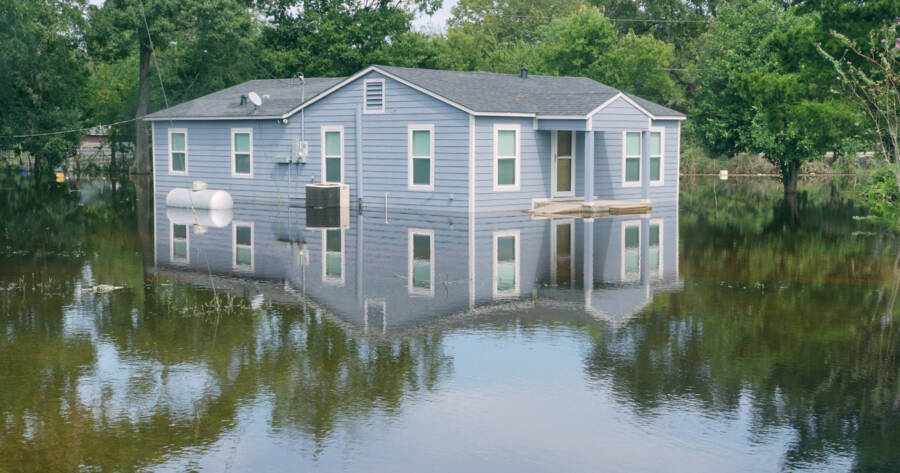It’s easy for homeowners to overlook the significance of flood insurance. However, in certain regions of the U.S., this oversight can be costly. Start a search today to find affordable flood insurance — before it’s too late.
Floods do not discriminate by geography, but there are specific states where the risk is markedly higher. It’s time to explore the importance of flood insurance, and which regions are at higher risk.
The Rising Tide: Understanding Flood Risk in America
America’s landscape is diverse, and so is its susceptibility to flooding. Factors such as coastal proximity, rainfall patterns, river systems, and urban development contribute to varying flood risks.
The Federal Emergency Management Agency (FEMA) maps these risks, categorizing areas into flood zones. Homeowners in high-risk zones, especially those with federally backed mortgages, are often required to have flood insurance. However, even those in moderate to low-risk zones should consider it.
Flood Insurance: A Closer Look
Flood insurance covers what many homeowners’ policies don’t: damage caused by external rising water. This can include structural damage, electrical and plumbing systems, HVAC, appliances, carpeting, and personal belongings.
The National Flood Insurance Program (NFIP), managed by FEMA, offers policies, but private insurers are increasingly providing competitive alternatives. Understanding the coverage limits, deductibles, and exclusions is vital for making an informed decision.
States with the Highest Flood Risk
Certain states face a heightened risk due to their geographical and climatic conditions. States like Florida, Louisiana, Texas, and California often witness significant flood events. Florida, with its extensive coastline and flat terrain, is particularly vulnerable to storm surges and heavy rains.
Louisiana’s proximity to the Gulf of Mexico and its river systems, like the Mississippi, amplify its risk. Similarly, Texas, with its vast size and diverse topography, experiences floods through hurricanes, tropical storms, and river flooding. California, known for its wildfires, also faces flash floods, especially in areas denuded by fires.
Navigating Policy Choices
Choosing the right flood insurance policy involves assessing your property’s risk, understanding coverage options, and comparing costs. In high-risk states, the decision may be straightforward due to mandatory requirements.
However, in other states, homeowners should weigh the potential cost of flooding against the expense of insurance. Consulting with insurance professionals and utilizing online resources can aid in this decision-making process.
Flood Insurance Myths Debunked
There are common misconceptions about flood insurance that need addressing. One major myth is that homeowners’ insurance covers flood damage—this is rarely the case. Another is that only properties in high-risk zones need flood insurance.
As flooding can occur almost anywhere, this belief leaves many unprotected. Understanding these misconceptions is crucial in making informed decisions about flood insurance.
Preparing for the Unexpected: Proactive Measures Beyond Insurance
While securing the right flood insurance is vital, proactive measures can significantly mitigate risks and potential damage. Homeowners in flood-prone states should consider elevating their homes, installing flood barriers or flood-proofing materials, and ensuring proper drainage systems.
Regular maintenance, such as clearing gutters and inspecting sump pumps, is also crucial. These preventive steps can not only reduce the impact of flooding but may also lower insurance premiums.
Community and Governmental Support Systems
In high-risk flood states, community and governmental initiatives play a pivotal role. Many states offer floodplain management programs, resources for flood mitigation, and recovery assistance.
Participation in community rating systems can lead to reduced insurance premiums for residents. Furthermore, understanding and complying with local building codes and ordinances designed to mitigate flood risk can prevent future hardships.
The Role of Technology in Flood Risk Management
Technological advancements are transforming flood risk management. Tools like flood risk assessment maps, real-time weather tracking, and predictive modeling are becoming increasingly accessible.
Homeowners can utilize these technologies to better understand their property’s risk and prepare accordingly. In addition, some insurance companies are now leveraging technology to offer more personalized insurance solutions based on individual risk profiles.
Looking to the Future: Flood Insurance and Real Estate
The intersection of flood insurance and real estate is an evolving landscape. In states with high flood risks, insurance costs and requirements can significantly influence property values and purchasing decisions.
Prospective buyers must consider the long-term implications of flood risks and insurance when evaluating properties. Real estate professionals are increasingly becoming knowledgeable about these factors, offering crucial guidance to buyers and sellers in flood-prone areas.
Learn More Today
In an era where climate unpredictability is the new norm, flood insurance emerges as a crucial element in safeguarding your property, especially in high-risk states. This article has explored various aspects of flood insurance, from understanding the risks to navigating policy choices.
However, this is just the tip of the iceberg. Each property and homeowner’s situation is unique, and staying informed is key. As you continue your journey, delve deeper into the specifics of flood insurance in your state and consider how changing climatic conditions might impact your decision.
